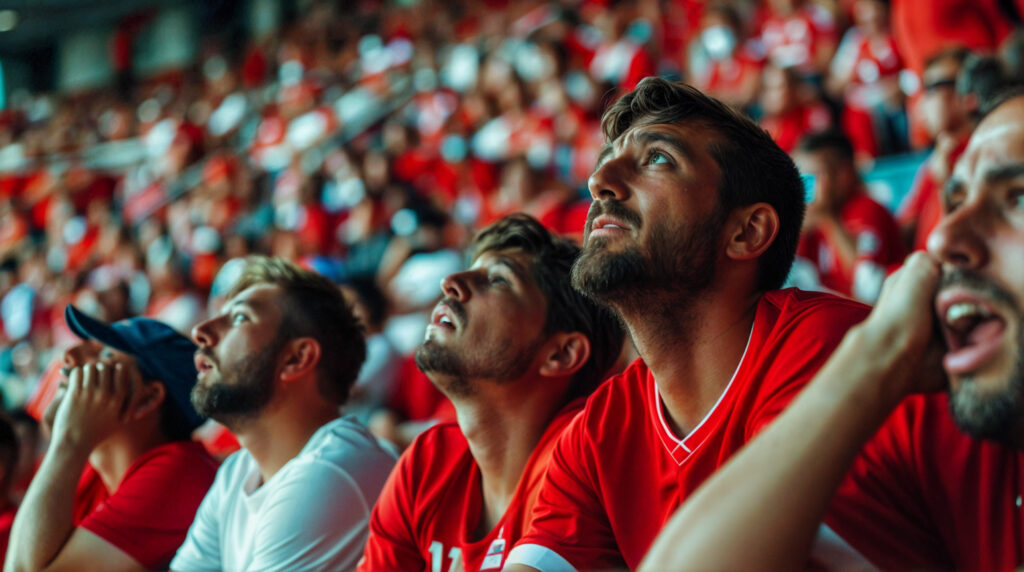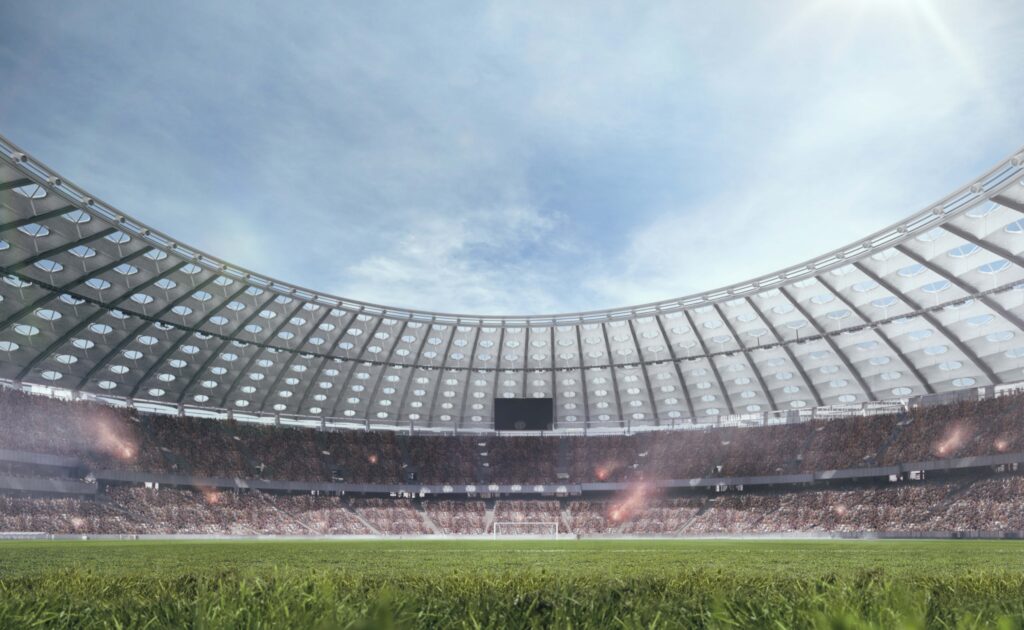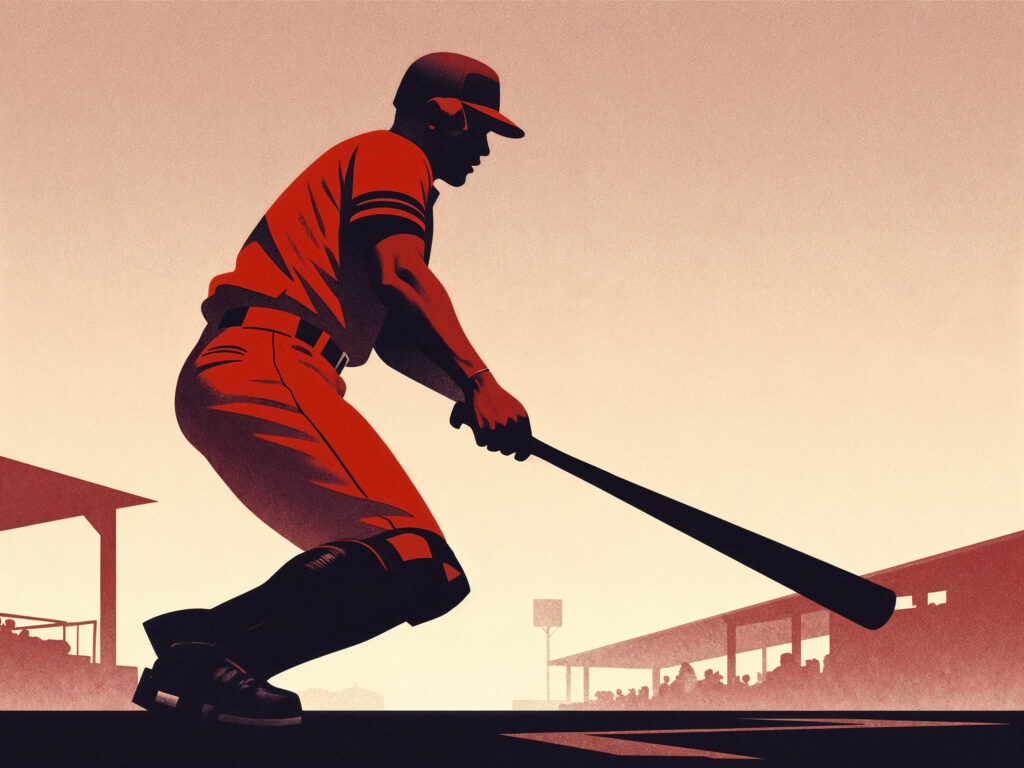
The Sancho Standoff ignited in September 2023. After Ten Hag publicly cited Sancho’s training levels as the reason for his omission against Arsenal, Sancho took the unprecedented step of calling his manager a liar on social media. Ten Hag’s response was immediate and severe: total banishment from first-team facilities until a full apology was issued. Sancho refused. This stalemate transformed the man utd dressing room into a battleground. Loyalties fractured, creating visible factions – players staunchly backing Ten Hag’s demand for discipline, others sympathizing with Sancho feeling the punishment was excessive, and many caught helplessly in the middle. The atmosphere turned poisonous, impacting morale and performances on the pitch.
The headline highlights how this single conflict Divided United at its core. The man utd dressing room, already under strain from inconsistent results and the immense pressure of representing the club, fractured along new fault lines. “Divided” isn’t hyperbole; it describes the tangible split in player allegiances that turned teammates into adversaries off the field. This saga became emblematic of deeper cultural issues – the struggle to manage elite egos, the weight of expectations, and the challenge of maintaining unity under intense scrutiny.
The Sancho Standoff wasn’t just about one player and one manager; it was a toxic clash that laid bare the fragility within the man utd dressing room and questioned whether Ten Hag could truly unify a club notorious for internal strife in the post-Ferguson era. The division it caused remains a shadow over the club’s rebuild.
1. Inside the Fractured Man Utd Dressing Room
Long before Sancho’s exile, cracks were forming in the man utd dressing room. Aging stars, underperforming signings, and leadership voids created a powder keg. Ten Hag’s strict “no excuses” culture – banning phones at meals, enforcing punctuality – initially steadied the ship. But as results wobbled, his laser focus on sancho man united news became a lightning rod for dissent. Players whispered about “double standards,” while Sancho’s camp felt he was unfairly scapegoated for the team’s struggles. The manchester united dressing room wasn’t just tense; it was a tinderbox awaiting a spark.
2. Sancho vs. Ten Hag: The Explosion That Split United’s Squad
The detonation came on September 3, 2023. After a 3-1 loss to Arsenal, Ten Hag publicly declared Sancho was dropped due to poor training. Sancho’s retaliatory social media post – accusing the manager of “lies” and claiming he’d been a “scapegoat for months” – ignited the Sancho Standoff. Overnight, sancho latest news dominated headlines. Ten Hag’s response was brutal: banishment from first-team facilities until a public apology arrived. Sancho refused. The man utd dressing room fractured into three camps:
-
Ten Hag Loyalists (Bruno Fernandes, Raphael Varane) who backed the manager’s authority.
-
Sancho Sympathizers (mostly younger players) who felt the punishment was excessive.
-
Neutral Faction desperate to avoid the crossfire.
Here’s a deeper breakdown of the three factions that formed within the Man Utd dressing room during the Sancho Standoff, revealing how the conflict fractured the squad’s unity:
1. Ten Hag Loyalists
(e.g., Bruno Fernandes, Raphael Varane, senior professionals)
-
Core Belief: “No player is bigger than the manager or the club.”
-
Motivation: Backed Ten Hag’s authority as essential to restoring discipline and long-term success. Saw Sancho’s public rebellion as an existential threat to the manager’s project.
-
Actions:
-
Privately/publically defended Ten Hag’s standards (e.g., Fernandes captaining with relentless intensity).
-
Isolated Sancho in training and matchday environments.
-
Reinforced Ten Hag’s “accountability” messaging in team meetings.
-
-
Why Them? Veterans like Varane (used to Zidane/Ancelotti’s strictness) and Fernandes (ultra-competitive captain) valued structure over individual talent.
2. Sancho Sympathizers
(e.g., Younger stars, non-starting XI players, some pre-Ten Hag signings)
-
Core Belief: “The punishment doesn’t fit the crime.”
-
Motivation: Felt Ten Hag’s handling was overly harsh, creating a climate of fear. Some related to Sancho’s mental health struggles or perceived “scapegoating.”
-
Actions:
-
Checked on Sancho privately during his exile.
-
Questioned Ten Hag’s man-management in player chats.
-
Leaked frustrations to media: “How does humiliating Jadon help us win?” (Source: The Athletic).
-
-
Why Them? Younger players (e.g., Alejandro Garnacho) identified with Sancho’s position. Others feared being next in Ten Hag’s crosshairs.
3. Neutral Faction
(e.g., New signings, fringe players, pragmatists)
-
Core Belief: “Keep your head down and survive.”
-
Motivation: Avoided taking sides to protect their careers amid chaos. Recognized the conflict as toxic but felt powerless to mediate.
-
Actions:
-
Stayed silent in team meetings.
-
Focused strictly on personal performance.
-
Refused to engage with media leaks.
-
-
Impact: Their silence inadvertently allowed the rift to widen. As one agent noted: “Neutrals become enablers in a divided locker room.”
Why This Division Paralyzed United
| Faction | Influence on Squad | Long-Term Damage |
|---|---|---|
| Loyalists | Strengthened Ten Hag’s authority short-term | Alienated teammates; seen as “teacher’s pets” |
| Sympathizers | Undermined dressing room discipline | Created distrust in manager’s fairness |
| Neutrals | Prevented collective resolution | Perpetuated a culture of passive compliance |
The Man Utd dressing room became a tinderbox of silent resentment (Neutrals), ideological clashes (Loyalists vs. Sympathizers), and tactical mistrust. Players reportedly split into separate meal tables, avoided group chats, and even hesitated to pass to certain teammates in training. This wasn’t just disagreement—it was operational dysfunction, proving how deeply the Sancho Standoff poisoned the well of unity at Carrington.
As man utd latest news outlets dissected every leak, the rift deepened.

3. The Cost of a Divided Man Utd Dressing Room
The fallout was catastrophic. With Sancho training alone and morale crumbling, results nosedived:
| Period | PL Matches | Wins | Losses | Goals Conceded |
|---|---|---|---|---|
| Pre-Standoff | 4 | 2 | 2 | 7 |
| During Standoff | 12 | 4 | 6 | 18 |
Off the pitch, the manchester united dressing room became a minefield:
-
Training Conflicts: Heated arguments over Sancho’s treatment erupted.
-
Media Leaks: Players weaponized journalists to attack opposing factions.
-
Trust Erosion: “Every team meeting felt like a tribunal,” revealed one insider to The Athletic.
The man utd problems weren’t just about Sancho; they revealed a club culture where accountability was selective and egos ruled.
4. Ten Hag’s Gamble: Discipline vs. Man Utd Dressing Room Unity
Erik ten Hag’s approach to managing Manchester United has been defined by one key principle: discipline. From the moment he took charge, he made it clear that no player — regardless of reputation or price tag — would be bigger than the club. While this no-nonsense style won him early praise, it now stands at the heart of a growing dilemma: can strict discipline coexist with dressing room unity?
The Sancho standoff was perhaps the clearest example of this tension. By publicly calling out the player’s attitude and excluding him from first-team activities, Ten Hag sent a strong message about standards and professionalism. But that message came at a cost. Some players reportedly felt the situation could have been handled more privately, raising concerns about fairness and man-management.
Balancing authority with empathy is one of the hardest challenges for any manager — particularly at a club as scrutinized as Manchester United. Ten Hag’s gamble lies in whether his tough-love approach will ultimately forge a more focused, resilient squad, or whether it risks dividing the dressing room further, especially if results falter.
Unity in the dressing room isn’t just about keeping players happy; it’s about building trust, cohesion, and a shared purpose. When players feel alienated or fear public criticism, it can damage morale and create factions. For a team already battling inconsistency and media pressure, that internal unrest can be costly.
Ten Hag’s challenge now is to maintain his standards without losing the dressing room. If he finds that balance, his legacy could be one of culture change and long-term success. But if the gamble fails, it may leave Manchester United not just off course, but fractured from within.
Ten Hag’s rigidity mirrored his Ajax philosophy: no player is bigger than the collective. But at United – a club drowning in politics – his approach backfired. While fans debated ten hag man utd tactics, players questioned his man-management:
“Erik’s strength is his discipline, but his weakness is flexibility. Sancho needed an arm around his shoulder, not exile.”
– Premier League coach (quoted in The Telegraph)
The man utd dressing room became a referendum on Ten Hag’s leadership. Would enforcing discipline restore order? Or had he sacrificed unity to win a power play?

5. Sancho Exit: Latest Man Utd Transfer News and Fallout
By January 2024, the stalemate was untenable. With no apology from Sancho and man utd dressing room tensions festering, a loan to Borussia Dortmund was brokered. Sancho transfer news briefly shifted focus, but the damage lingered:
-
Financial Blow: United subsidized 60% of Sancho’s £300k/week wages.
-
Squad Imbalance: No direct replacement left United short on the right wing.
-
Legacy of Distrust: Players noted how quickly the club discarded a £73m asset.
By January 2024, the Sancho Standoff had reached nuclear stalemate. With no apology forthcoming and man utd dressing room tensions threatening to derail the entire season, a desperate compromise was struck: Sancho would return to Borussia Dortmund on loan. While sancho transfer news briefly dominated headlines, the deal was less a resolution and more a radioactive truce. The damage, however, seeped far deeper than the tabloid cycle:
1. Financial Carnage: A Symbol of Mismanagement
-
Subsidized Failure: United agreed to pay £180,000-per-week of Sancho’s £300k wages – £9.36m flushed for half a season of zero contribution. This brutal math exposed the club’s catastrophic loss of leverage.
-
Asset Depreciation: Sancho’s market value plummeted from £73m to under £25m (Transfermarkt). Dortmund secured no option-to-buy, leaving United trapped with a depreciating asset they couldn’t use or sell.
-
FFP Implications: The deadweight cost hampered January recruitment, forcing United to rely on Antony – whose own struggles amplified the crisis.
2. Tactical Bankruptcy: The Void on the Right
-
Unfilled Chasm: Sancho’s exit left United with no natural right-winger. Antony’s alarming regression (0 goals, 1 assist in 20 PL apps) and Facundo Pellistri’s loan to Granada turned the position into a black hole.
-
Square Pegs, Round Holes: Ten Hag resorted to playing left-footers Alejandro Garnacho or Marcus Rashford out of position, disrupting their rhythm and the team’s attacking symmetry.
-
Data Point: United’s right-wing output post-Sancho exit ranked 18th in the Premier League for chances created (WhoScored), crippling their attacking balance.
3. The Unseen Scar: Erosion of Trust in the Man Utd Dressing Room
-
“Who’s Next?” Mentality: Younger players watched a £73m signing – once hailed as a cornerstone – discarded after a public feud. As one squad member confided to The Athletic: “If it can happen to Jadon, it can happen to any of us. What’s the plan here – exile everyone who disagrees with the boss?”
-
Agent Whispers: Representatives of other stars reportedly warned clients: “United doesn’t protect investments. One conflict and you’re out.” This damaged future recruitment.
-
Divided Loyalties, Lingering Resentment: Sancho sympathizers saw the loan as vindication of their belief the punishment was excessive. Loyalists felt it rewarded insubordination. The man utd dressing room ceasefire remained fragile, built on simmering discontent.
4. Dortmund’s Rebirth vs. United’s Regret
-
Sancho’s Revival: Contrast fueled bitterness. Sancho registered 3 goals + 2 assists in his first 8 Dortmund games, looking re-energized. Every highlight reel was a silent indictment of United’s environment.
-
Media Narrative: Pundits relentlessly asked: “Was it Sancho… or was it United?” This public questioning further destabilized the man utd dressing room, implying the club – not the player – was the toxic constant.
6. Can Ten Hag Heal the Man Utd Dressing Room After Sancho?
The fallout from the Jadon Sancho saga has left a noticeable scar on Manchester United’s dressing room dynamics. What began as a tactical omission quickly evolved into a public rift, exposing deeper tensions between players, management, and the club’s leadership. As the dust begins to settle, the spotlight now turns to Erik ten Hag: can he truly heal the fractured dressing room?
Ten Hag arrived at Old Trafford with a reputation for discipline and structure, aiming to instill a culture of accountability. However, his hardline stance on Sancho — including the player’s public exclusion — has drawn mixed reactions. Some viewed it as a necessary assertion of authority, while others saw it as a mishandled dispute that risked alienating parts of the squad.
Healing the dressing room won’t be just about reconciling with one player. It will require Ten Hag to rebuild trust, both individually and collectively. Players need to feel they are being treated fairly, that grievances are handled internally, and that personal conflicts won’t derail team unity. His ability to communicate openly, admit missteps where necessary, and show adaptability in man-management will be critical moving forward.
Furthermore, results on the pitch will play a massive role. Winning heals many wounds in football, and a strong run of form can quickly change narratives. But without addressing the emotional and psychological divide created by recent events, even victories may only offer temporary relief.
Ultimately, Ten Hag’s leadership is at a crossroads. Whether he emerges as a unifying force or loses control of the dressing room will define not just his tenure at Manchester United, but potentially the club’s trajectory for seasons to come.
With Sancho gone, the man utd dressing room faces a long road to recovery. Key challenges remain:
-
Rebuilding Trust: Players who backed Sancho feel alienated. Ten Hag must mend fences without compromising authority.
-
Cultural Reset: New co-owners INEOS demand a purge of “mercenary mentality.”
-
Performance Pressure: Results are the only antidote to toxicity.
As one club legend warned in Sky Sports:
“United’s manchester united dressing room has been broken for years. Ten Hag won the battle with Sancho, but the war to unite this squad is just beginning.”
7. The Lingering Shadow on Manchester United
The Sancho Standoff exposed more than a feud; it revealed systemic man utd problems: a lack of leadership, fragile egos, and a culture where conflicts go nuclear. While sancho latest news focuses on his Dortmund revival, the scars at Carrington remain. Ten Hag’s project hinges on transforming the man utd dressing room from a warzone into a brotherhood. For man utd latest news, this saga remains the cautionary tale of how quickly a club can fracture – and how hard it is to glue back together.
The Sancho Standoff wasn’t an anomaly – it was a biopsy revealing terminal cancer within Manchester United’s culture. While sancho latest news celebrates his Dortmund revival, the saga left structural damage at Carrington that continues to undermine Erik ten Hag’s project. Here’s why the shadow persists:
1. The Five Systemic “Man Utd Problems” Exposed
| Problem | How the Standoff Exposed It | Current Status |
|---|---|---|
| Leadership Vacuum | No senior player/executive mediated the feud; Glazers were passive spectators. | INEOS now scrambling to install a sporting structure. |
| Reactive, Not Proactive Culture | Conflict festered for months before the loan “solution.” No preventative man-management framework. | Same approach seen in Antony/Mount struggles. |
| Accountability Imbalance | Sancho exiled, but underperforming “Ten Hag signings” (Antony) faced no public reckoning. | Double standards erode trust. |
| Leak-Prone Environment | Factions weaponized media (e.g., Sancho camp’s “scapegoat” narrative; pro-Ten Hag briefings). | Dressing room still a sieve for tabloids. |
| Financial Dysfunction | £180k/wk wasted on exiled player; no sell-on plan for £73m asset. | FFP restrictions now blocking critical signings. |
2. The Unhealed Scar on the Man Utd Dressing Room
-
Psychological Toll: Players internalized a brutal lesson – conflict = exile. This breeds fear, not accountability. As a current squad member told The Guardian: “You don’t speak up. You don’t question. You survive.”
-
Brotherhood Broken: The factions (Loyalists/Sympathizers/Neutrals) didn’t magically reconcile. Shared meals, group chats, and training-ground camaraderie remain fractured.
-
Ten Hag’s Credibility Gap: His “strict but fair” mantra rings hollow for players who saw Sancho discarded while others underperformed without consequence. Trust must be earned back daily.
3. The Bigger Picture: A Post-Ferguson Curse
The standoff fits a devastating pattern since 2013:
-
Mourinho vs. Pogba (Public fallouts, “virus” accusations)
-
Ronaldo’s Piers Morgan Nuclear Option
-
Ten Hag vs. Ronaldo THEN Sancho
Each clash followed the same script: Player rebels → Manager goes public → Club fails to mediate → Expensive divorce → Dressing room fractures deeper.
Why “Transforming the Man Utd Dressing Room” Is Ten Hag’s Only Hope
(Keywords: man utd dressing room, man utd latest news)
For Ten Hag, the Sancho Standoff redefined his mission:
Tactics < Transformed Culture
Signings < Squad Unity
Wins < Rebuilt Trust
The war isn’t for trophies (yet) – it’s for the soul of the dressing room. Every piece of man utd latest news – a leaked argument, a passive-aggressive interview, dropped points – is scrutinized for signs the cancer has spread.
The Glue That Doesn’t Stick: Why Unity Fails at United
| Attempted “Glue” | Why It Failed |
|---|---|
| Managerial Authority | Ten Hag’s exile tactic won the battle but lost the war (alienated Sympathizers). |
| Big Signings | Casemiro, Varane, Sancho – all brought stature, not harmony. |
| Captaincy Changes | Bruno’s passion divides as much as it inspires. |
| New Owners (INEOS) | Long-term structural change doesn’t heal short-term emotional wounds. |
Manchester United’s internal struggles under Erik ten Hag reflect a broader trend of unrest brewing across English football. The power struggles, fractured dressing rooms, and fan disillusionment aren’t exclusive to Old Trafford. Over at Everton, similar chaos has erupted between supporters and the board, as detailed in our in-depth look at the Goodison Park Protest Civil War. Both cases underline how poor leadership and fractured club identity can push even historic clubs to the brink.




